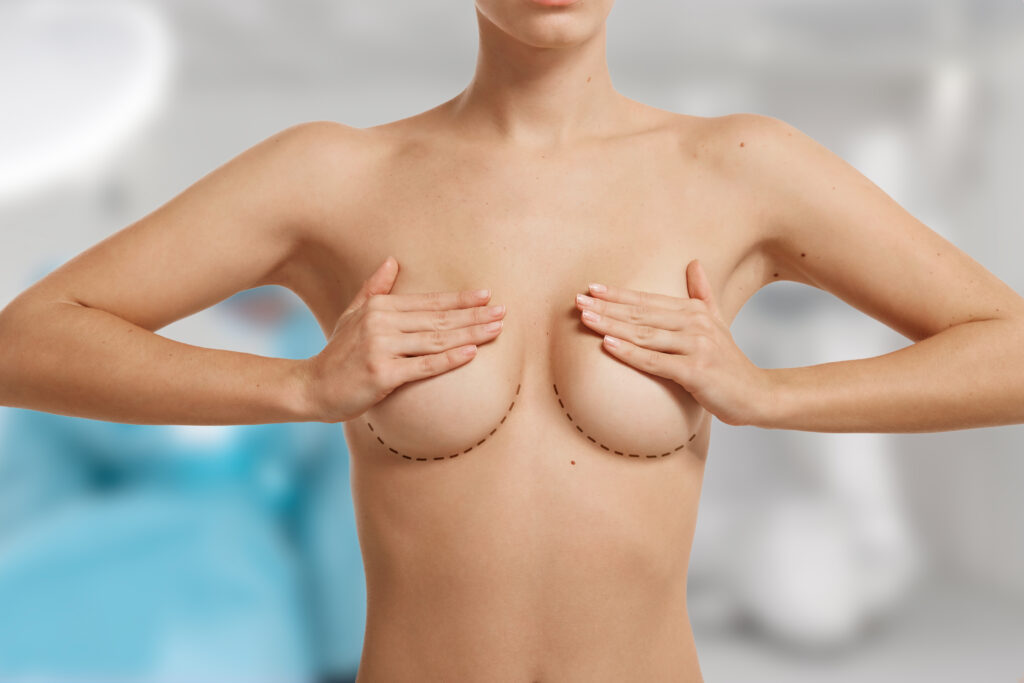There has been lots of scientific research on how serious is the negative stigma associated with protruding ears and other ear conditions. For kids, it can mean suffering from teasing, ridiculing, and even bullying, but adults might also feel uncomfortable about their appearance and look for cosmetic enhancement. In many cases, specialists will recommend surgery to solve these issues. So, we wanted to know how the patient’s condition looks before and after otoplasty and how much you can expect from the operation.
We are grateful to Dr. Rafael Zatz, a renowned surgeon and a specialist in ear surgeries, who has kindly agreed to answer our questions about otoplasty. In this article, you’ll learn what types of ear conditions can be treated with surgery. You will also find an extensive “before and after otoplasty” photo section where we explain what the operation achieved in every case.
The success of the surgery depends not only on the doctor’s technique but also on proper preparation and aftercare, so we’ll cover them as well. Finally, we asked Dr. Zatz about the price of otoplasty, so make sure to check it out!
What Is Otoplasty?
Also known as ear surgery or ear pinning, otoplasty is a popular surgical procedure whose goal is to reshape or reposition the ears to improve their appearance. A surgeon can use one of several techniques to perform otoplasty depending on the patient’s condition, but the main idea is to reshape the ear cartilageEar cartilage is a flexible and firm connective tissue that forms the structure of the external ear. Sometimes, such an operation can also have a practical benefit, as wearing a headdress becomes easier after the ear positioning has been corrected.

Source: Cleveland Clinic
An illustration of the ear anatomy. Ear cartilage is a scientific name for the tissue this part of the ear consists of.
However, the most important benefits of otoplasty are psychosocial—an overwhelming majority of patients report enhancements in self-esteem, improved social interaction, and a decrease in bullying. A study that assessed the outcomes of otoplasty has found that a stunning 92% of children between 5 and 16 years of age have experienced improved self-esteem after the operation[1]. Dr. Zatz has shared several stories of his patients for whom getting surgery was a great relief.
“I think bullying is the most common complaint. If it is not a child suffering from bullying, then it is an adult who went through it in the past. I had one patient who dropped his work career to avoid the extremely frustrating social interaction. Yes, unfortunately, isolation can be the case.”
— Dr. Rafael Zatz
We mentioned protruding ears before, but it is not the only problem otoplasty can solve, so let’s look at the list of ear conditions that can make you a candidate for ear surgery.
What Ear Conditions Can Surgery Treat
First of all, there are two types of problems: congenital deformities and acquired deformities. The former are conditions that are present at birth, while the latter usually appear as a result of physical trauma. Let’s look at them one by one.
Protruding Ear

Source: The New York Hearing Center
Protruding or prominent ears is the most common condition on the list, as it can be seen in 5% of the global population[2]. It is characterized by an increased angle between the ear and the side of the head, causing the ears to appear more prominent. Usually, an ear is considered protruding if it sticks out for more than 2 centimeters. Prominent ears have genetic reasons, and often, a patient can notice this trait in other family members. In such cases, the cartilageEar cartilage is a flexible and firm connective tissue that forms the structure of the external ear in the ear may not be as developed or folded as it would be with less prominent ears—and that is what a surgeon needs to fix. You can see the results of several successful operations in the “before and after otoplasty” section.
Macrotia

Source: Zenith Cosmetic Clinics
In simpler terms, macrotia (not to be confused with microtiaMicrotia is an ear condition characterized by a small, underdeveloped external ear.) means disproportionately large ears. Macrotia is significantly less frequent than protruding ears, but that doesn’t mean that surgeons are unprepared to deal with it. Unlike protruding ears, the doctor needs to focus more on the size of the cartilage rather than its shape. The variation of otoplasty surgeons use in such cases is called reduction otoplasty.
Constricted Ear

Source: Walid Sabbagh
Constricted, cup, or lop ears are the names of the same ear condition. A constricted ear typically appears smaller or narrower than a typical ear. This is often due to underdevelopment of the cartilageEar cartilage is a flexible and firm connective tissue that forms the structure of the external ear. and insufficient unfolding of the natural folds in the ear. Depending on the severity of the condition, the surgeon can either reshape the existing cartilage or get the cartilage from another body part.
Stahl’s Ear
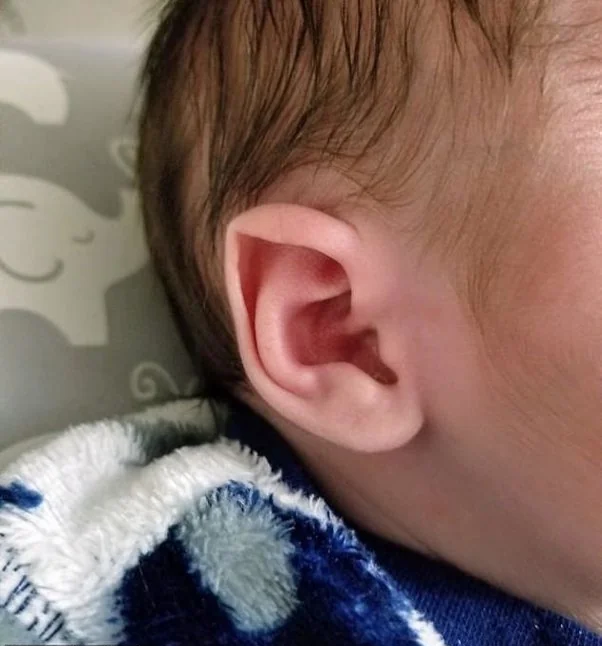
Source: Reddit
Sometimes, an ear cartilage can have an extra fold, which can cause a condition called Stahl’s ear. In short—a noticeably pointy ear is the main identification of Stahl’s ear. This one is also a congenital deformity, and otoplasty can fix it.
Cauliflower Ear
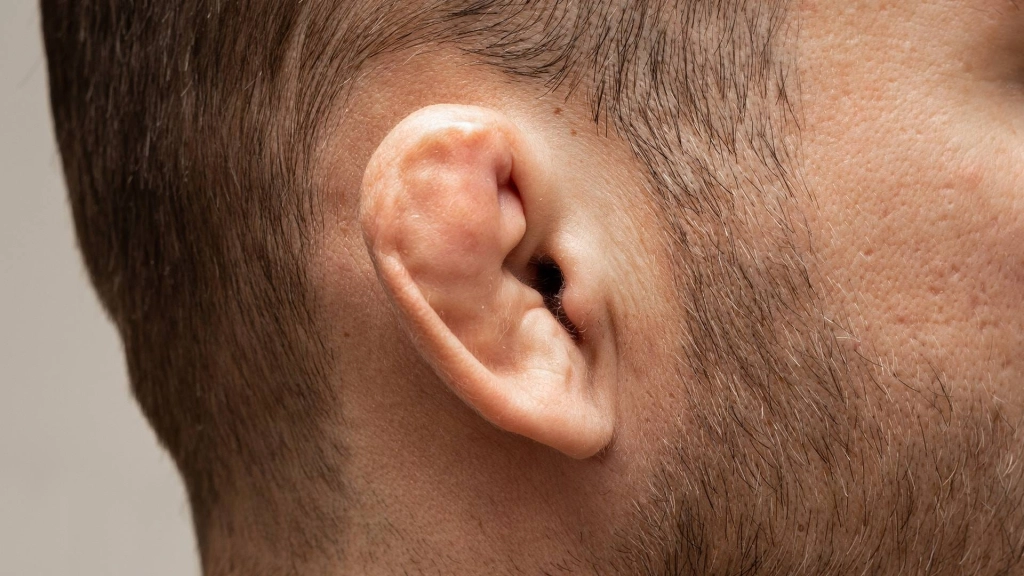
Source: gesund.bund
Ear conditions caused by trauma can be very different, but cauliflower ear is the most common one. Sometimes called boxer’s ear, cauliflower ear is often caused by a direct hit that leads to bleeding between the cartilageEar cartilage is a flexible and firm connective tissue that forms the structure of the external ear. of the ear and its covering, called the perichondrium. If the injury is not treated immediately, this blood accumulates between the cartilage and perichondrium and forms a clot. As a result, the cartilage loses its blood supply, leading to tissue damage and a changed ear shape that resembles cauliflower.
Otoplasty can also fix a number of other less common conditions, but the ones we’ve just listed will appear in the next part of the article, where we will discuss the results of otoplasty surgery.
Results of Otoplasty: Before and After
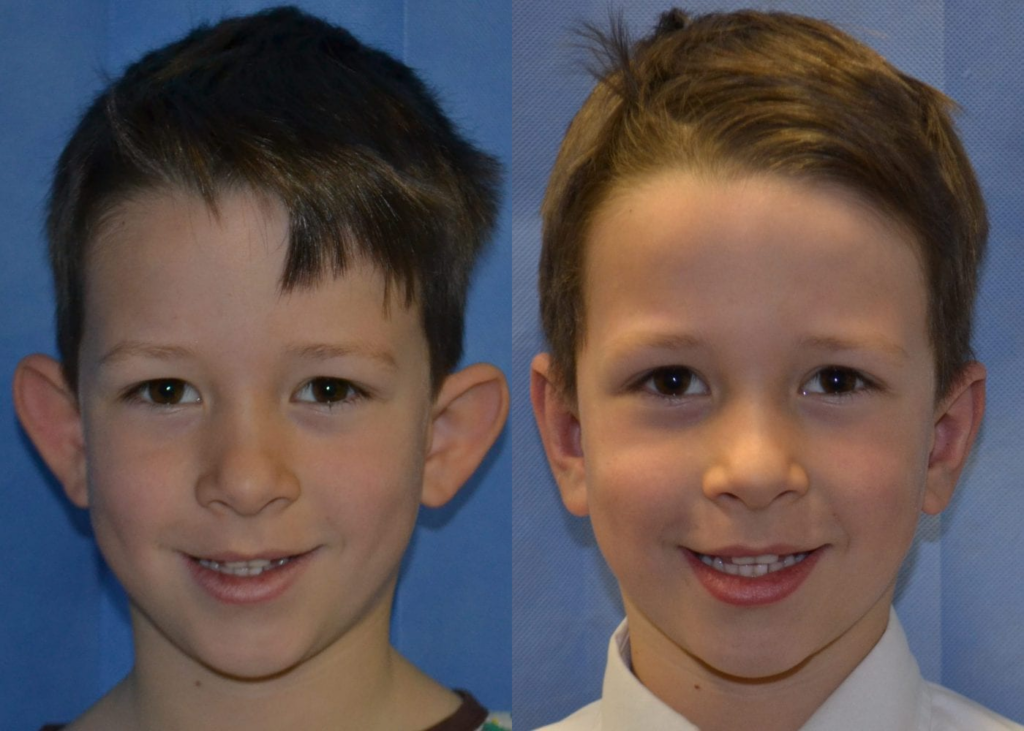
An example of otoplasty for protruding ears
This is a classic example of otoplasty for protruding ears for kids. The operation went perfectly, and the outcome looks very natural.

An example of otoplasty for protruding ears
In this case, the surgeon had to fix the facial asymmetry caused by a protruding ear. As a result, the difference between the shape of the ears is barely noticeable, which is a definite success.
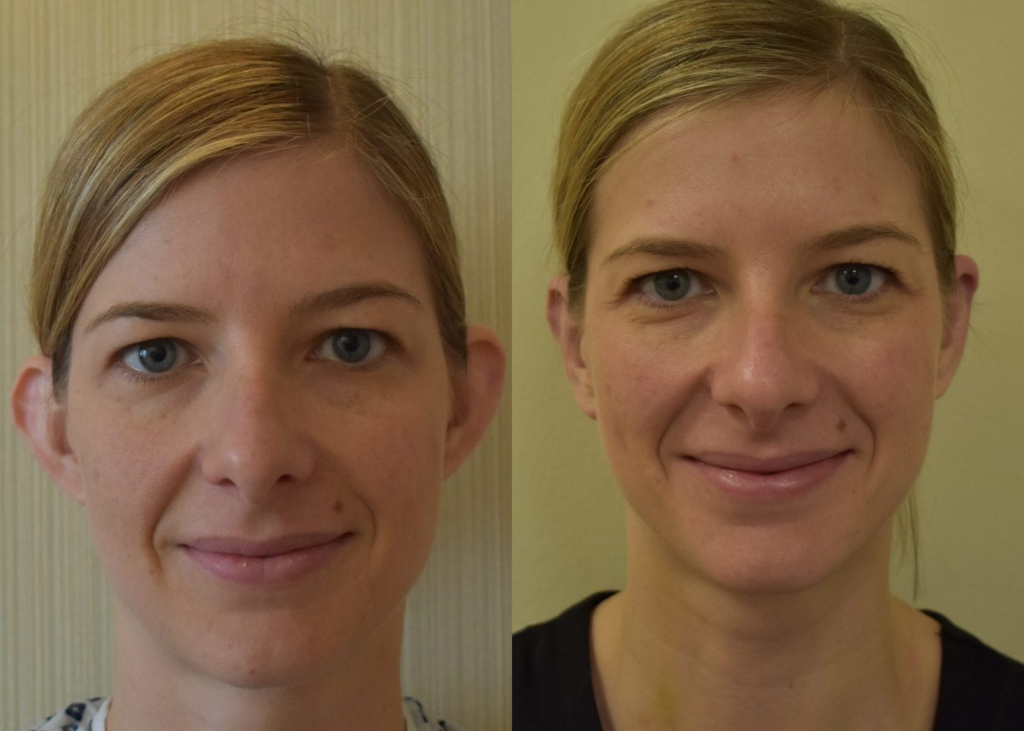
An example of otoplasty for protruding ears
Here is the same type of otoplasty operation but performed for an adult patient. The ears are significantly less noticeable now.

An example of otoplasty for macrotia
This patient had macrotia, so the reduction otoplasty has been performed. The surgeon had to reshape the ear cartilageEar cartilage is a flexible and firm connective tissue that forms the structure of the external ear. to make the ear appear smaller.

Source: Walid Sabbagh[3]
An example of otoplasty for constricted ears
The difficulty of fixing a constricted can differ from patient to patient, but usually, a significant reshaping of the upper part of the ear is required. You can see how much the shape changed based on the shift of the earlobe (the target position was marked on the left photo).
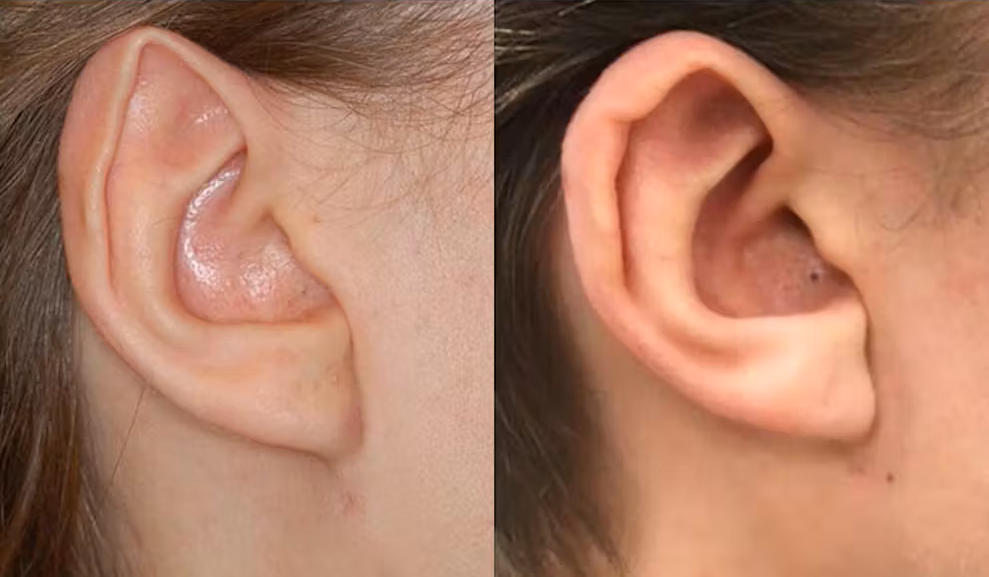
An example of otoplasty for Stahl’s ears
In this case, the surgeon has reshaped the pointy tip of the ear. Stahl’s ear otoplasty is considered a rather complicated surgery, and the debate about the proper technique is still ongoing[5]. This operation, however, went smoothly, leaving no visible scarring and noticeable deformity.
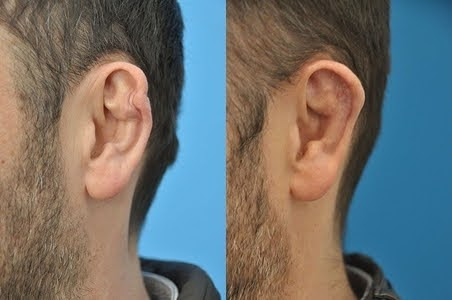
An example of otoplasty for cauliflower ears
The before otoplasty photo shows an ear cartilage that was deformed due to trauma and following infection. The surgeon had to use a cartilageEar cartilage is a flexible and firm connective tissue that forms the structure of the external ear. grafting technique (using connective tissue from another body part, usually ribs) to reshape the ear.
How To Ensure the Success of Operation
We talked to many specialists in the field of plastic surgery, and regardless of whether we discussed liposuction or otoplasty, they all said that the doctor’s technique is just one part of a successful outcome. Proper preparation and aftercare are also a patient’s responsibility that plays a huge role. So, let’s find out how to minimize surgical risks throughout the three stages of the process: finding the right professional, preparing for the operation, and healing after otoplasty surgery.
Choosing the Right Specialist
There is no shortage of skilled plastic surgeons in Brazil, but we still recommend completing these steps before making the final choice:
🕵️♂️ Verify the credentials
Look for a surgeon who is board-certified in plastic surgery or otolaryngology (ear, nose, and throat surgery). In Brazil, you can verify the credentials of a plastic surgeon via the website of the Brazilian Society of Plastic Surgery.
🧐 Assess the expertise of a surgeon
Medical doctors also have their preferences—they might like or dislike performing certain procedures. It is better to get an otoplasty from a surgeon who specializes in enhancements of facial aesthetics and ear surgeries.
📸 Check before and after photos
Not every surgeon publishes many before and after photos, often because they need to get patients’ consent before doing so. If you can’t find enough pictures on the website, try checking Instagram or Facebook pages. It will be perfect if you can find not just before and after otoplasty photos, but also those that relate specifically to your condition.
📝 Read patients’ reviews
This one sounds obvious, but still—look for reviews on the doctors’ websites, review sites, and Google Maps (the latter is arguably the most helpful source). At the same time, keep in mind, that any kind of surgery carries inherent risks (even otoplasty with its high success rate), so the perfect result isn’t always possible.
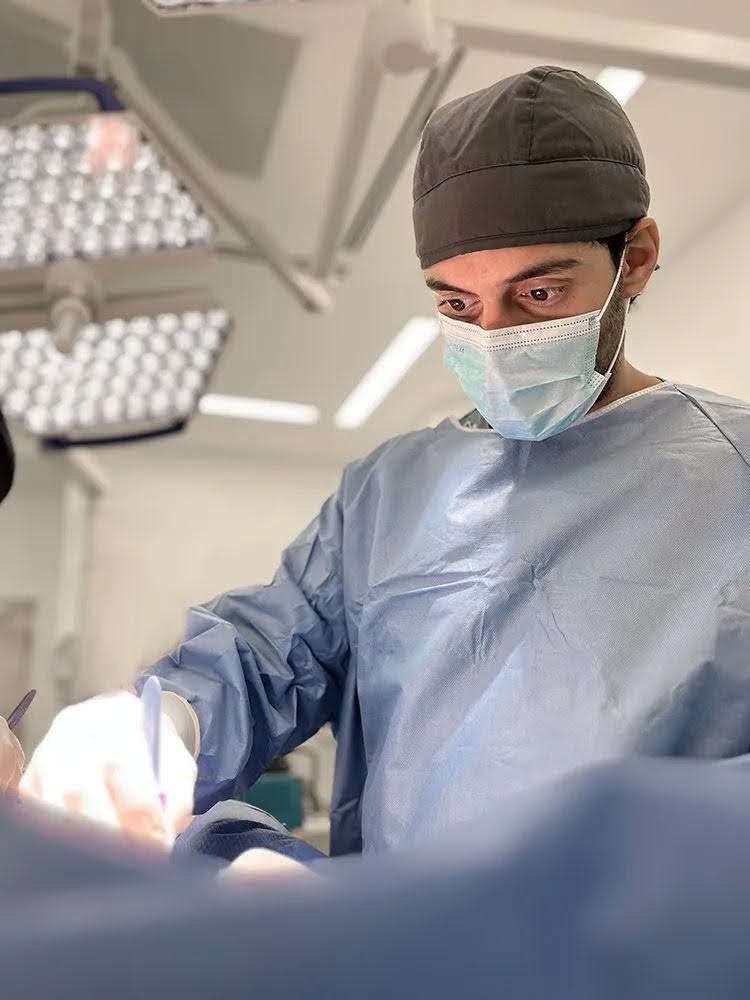
Source: Rafael Zatz
The surgery process, performed by Dr. Zatz
Preparing for Otoplasty Surgery
Usually, otoplasty doesn’t require any complicated preparations. All the details you need to know will be explained to you by your surgeon. With that being said, if the requirements seem unclear or some aspect has been overlooked, you should never hesitate to ask follow-up questions. Here’s the list of the most common things you might see.
- Avoid medications that might increase bleeding for at least two weeks before an operation. These include aspirin, ibuprofen, herbal supplements, and other drugs.
- Take a shower the day before the operation, as you might not be able to wash your hair for several days after otoplasty surgery.
- Quit smoking at least two weeks before the operation, as it might increase bleeding during otoplasty.
- Avoid being under the direct sun for at least a week prior to surgery. It is also recommended to wear SPF 30 or higher when you go outside.
- Don’t eat or drink anything the night before surgery.
Postoperative Requirements
Otoplasty aftercare is a slightly more complicated process, but if you follow the surgeon’s guidelines—the recovery won’t be problematic. The doctor will prescribe painkillers, antibiotics (to mitigate the risk of infection), and wearing otoplasty band. You will also be instructed on how to choose a sleeping position, moderate physical activity, and avoid sun damage. We have a very detailed aftercare section in our extensive review of otoplasty surgery, so check it out!
“I always stay in touch with my patients. During the first postoperative week, I talk to them every day. After the first 5 days, we update the recovery schedule and decide whether it is appropriate to lift certain restrictions or not.”
— Dr. Rafael Zatz
Celebrities Who Had Otoplasty
You will be surprised to know how many celebrities have undergone ear surgery. Here are a couple of examples of the before and after otoplasty photos of famous artists and movie stars.
Brad Pitt

Source: Michael Ochs Archives and Glenn Francis
Brad Pitt, before and after otoplasty for protruding ears
You probably would not expect to see Brad Pitt on this list, but here we are. It is not too noticeable, so you need to look at before and after otoplasty photos closely to notice that the actor has undergone ear surgery to pin back his ears slightly.
Alessandra Ambrosio

Source: Instagram/@alessandraambrosio and Stefania D’Alessandro
Alessandra Ambrosio has also undergone otoplasty surgery
Unlike Brad Pitt, the Brazilian superstar’s experience with plastic surgery wasn’t perfect. Alessandra Ambrosio had to undergo several follow-up surgeries to improve the outcome of the first operation. We don’t know whether it happened because of the surgeon’s mistake or any other factor, but recommend checking out the section on how to choose a qualified specialist who will minimize the inherent surgical risks.
Paul Stanley

Source: Lily Lawrence
Paul Stanley’s ear were usually covered by his iconic hair
Paul Stanley from the “KISS” rock band has suffered from microtiaMicrotia is an ear condition characterized by a small, underdeveloped external ear. even after his band achieved worldwide fame and recognition. In one of the interviews, he described his experience, “When you have something physical that sets you apart from people, it makes you really a target of unrelenting scrutiny and sometimes ridicule.” In 1982, he underwent reconstructive ear surgery (sometimes called neo-otoplasty). Unlike traditional otoplasty, the surgeon had to create an entirely new ear cartilageEar cartilage is a flexible and firm connective tissue that forms the structure of the external ear. rather than fixing an existing one.
Ben Stiller
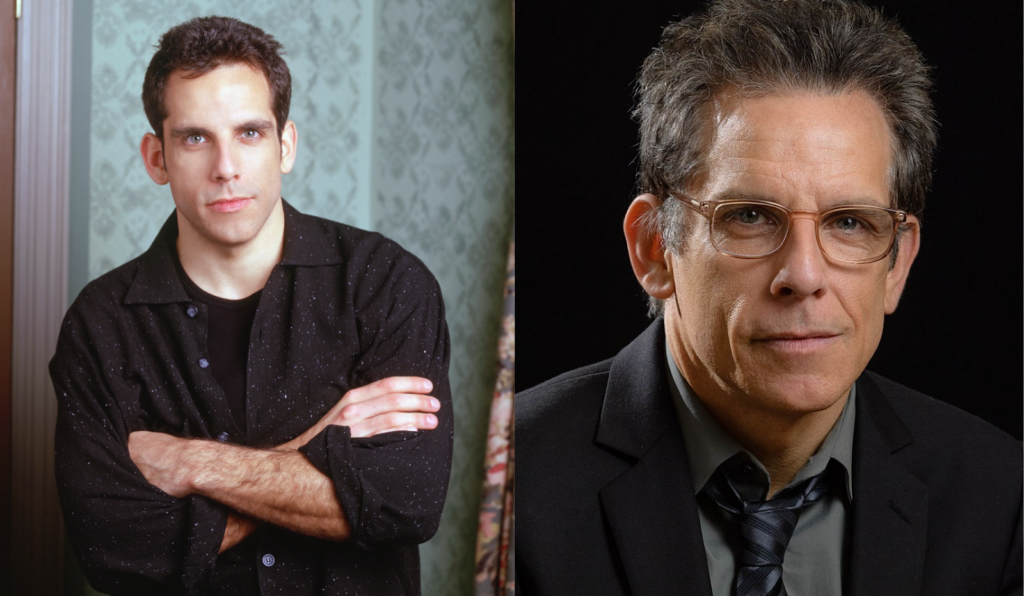
Source: Paul Drinkwater and Neil Grabowsky
Ben Stiller is rumored to have undergone otoplasty surgery
A famous comedian and actor, Ben Stiller, has never confirmed getting otoplasty surgery. At the same time, numerous fans pointed out that Ben’s ears look smaller than before, and the International Society of Aesthetic Plastic Surgery seems to have the same opinion.
How Much Does Otoplasty Cost?
We asked Dr. Zatz about the price of otoplasty and what factors influence the final number. “A patient can expect to pay between R$13,000 and 20,000 ($2,600–4,100). However, the specific price depends on the severity of the condition. For example, a comparatively simple protruding ear operation will be in the lower part of the price range, but the cost of complex reconstructive otoplasty can be significantly higher.”
Another important question patients often ask is whether the health plan can cover the cost of otoplasty. In fact, it can be possible in many cases because ear deformities, including those caused by trauma, are identified in the International Classification of Diseases (ICD). Legal details can get tricky, so we recommend consulting your medical specialist on how the cost of your otoplasty surgery will get reimbursed.
Summary
Ear surgery is a reliable way to avoid the social stigma associated with protruding ears and other ear conditions. As you can see from our before and after otoplasty section, an experienced surgeon can reshape almost any kind of deformity, including constricted or cauliflower ears. In fact, many celebrities underwent otoplasty with no visible scars or complications.
Insights from Dr. Rafael Zatz proved indispensable when we were exploring the topic, especially—surgery preparations and aftercare. Dr. Zatz also gave a brief cost breakdown (including insurance coverage of otoplasty) that is, of course, crucial for building realistic financial expectations.
Thanks a lot for reading! We hope the insights we gathered will help you make a decision that will help you improve your life.
FAQ
💰 What Is the Cost of Otoplasty?
The price of otoplasty surgery can range from R$13,000 to R$20,000 ($2,600-4,100). However, the final price depends on the complexity of the surgery and insurance coverage.
👂 What Does the Ear Look Like After Otoplasty?
Otoplasty has a high success rate and produces aesthetically pleasing outcomes. You can see before and after otoplasty photos in a dedicated section.
🩸 What Are the Risks of Otoplasty?
As with any other surgical procedure, otoplasty carries some inherent risks (even though complications are relatively uncommon). The surgeon has to mitigate the risk of intensive bleeding, stitch opening, or overcorrection, which might lead to further surgeries.
🤕 For How Long Will I Feel Pain After Otoplasty?
The first day after otoplasty is the worst in terms of pain management, however, prescribed painkillers are usually enough to deal with it. From the second day, the pain will rapidly decrease.
👶 What Is the Best Age To Have Protruding Ear Surgery?
There is no ‘best’ age for the surgery, although, in some sense, getting otoplasty early (it can be done from the age of 5) can be better, as the patient will avoid dealing with the stigma associated with protruding ears and other ear conditions.



